Could there be any greater delight than getting to the end of a wintery gravel ride with a dry derrière? Or taking a sip of your mid-ride coffee without mud crumbling off your face into your flat white?
For the yet-to-be-converted, mudguards – or fenders – can be a real game-changer for winter gravel riding, or simply cycling in the rain.
But aren't dirt, gravel and grit all part of off-road riding? And what are the mudguard/fender options out there for gravel bikes?
Here, we look into why you should consider fitting mudguards to your gravel bike, as well as the different options for all types of bike (and budget) and the practical considerations you need to take into account before plunging into foul-weather bliss.
Why should you fit mudguards to a gravel bike?

The pros...
We've touched on the plus-sides already: just like road bike mudguards and mountain bike mudguards, gravel 'guards essentially limit the amount of water, mud and debris that flicks up off your gravel tyres and onto you or your bike.
How effective that protection is will depend on how much coverage your mudguards offer.
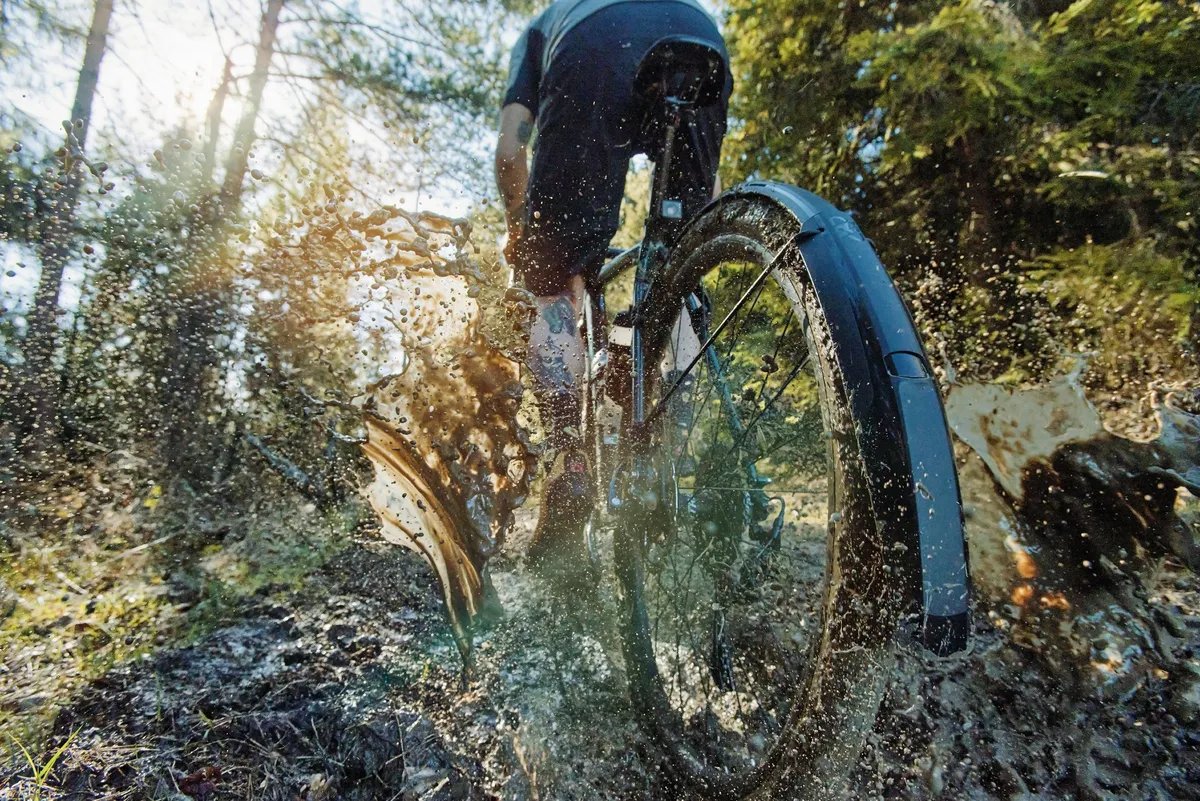
Options range from minimal strap-on mudguards that offer light relief for your face or backside, to full-length mudguards that give much more protection, helping to keep you dry from head-to-toe, while also maintaining your bike frame and components in better condition.
Keeping water and muck off your body will help you feel comfortable on the bike. If it's cold and you're wet, you're more likely to catch a chill, and no one enjoys sitting on a soggy chamois.
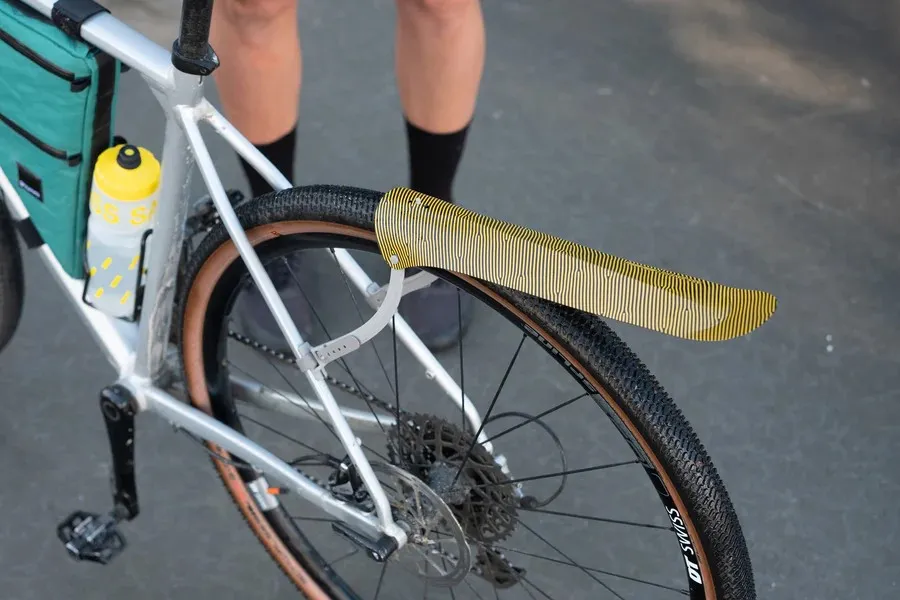
Riding off-road is also inherently tougher on bike components, including your drivetrain, where grit, stones and sand can quickly combine to become a component-eating paste. So besides keeping you warm and dry, fitting mudguards can help prolong the lifespan of your bike parts. This surely makes them one of the best gravel bike accessories going.
The cons...
Well, as with anything, there can be downsides to fitting mudguards on your gravel bike.
Firstly, there's the matter of clearance. Adding an extra layer of metal or plastic around your tyres needs space, especially where potential trail debris is factored into the equation, and not all off-road bikes have the clearance to add mudguards, particularly if you still want to run a chunky tyre.

You may find that you need to run a smaller-volume tyre in order to run mudguards on your gravel bike, or even opt for a smaller wheel size by switching from 700c wheels for 650b to give extra space, if your bike offers compatibility.
Adding mudguards to your bike will also add weight, though exactly how much depends on what type you opt for. Unless you're racking up serious climbing, the extra protection on offer will likely offset any weight gain.
Finally, fitting mudguards can sometimes be a bit trickier than you'd expect. It's worth taking your time to get the fit just right, or asking a local mechanic to help out.
Front mudguard, rear mudguard or both?

While road riders will typically mount a set of mudguards at both the front and rear of the bike, gravel riders or mountain bikers may opt to run a 'guard at only one end.
Why? Well, the front and rear mudguards serve slightly different purposes, and how much you value front or rear protection will depend on your personal preferences.
While the front mudguard acts mostly to stop mud flicking up off your front tyre into your face, the rear mudguard functions mostly to stop spray hitting your rear end.
Full-length mudguards with flaps also help to keep this filth off your feet and bike, which can be largely attributed to the front mudguard.
Most riders tend to opt for both front and rear mudguards for greater protection, though there's no reason why you couldn't run just one or the other.
Three types of gravel mudguard
Generally speaking, there are three types of gravel mudguard: short-coverage clip-on mudguards (available for either the front or, more commonly, the rear), full-coverage clip-on mudguards and full-coverage mudguards that require eyelets.
Choosing the most suitable option will depend on exactly what you want from your mudguard(s) and what you can fit to your bike.
Short-coverage clip-on mudguards
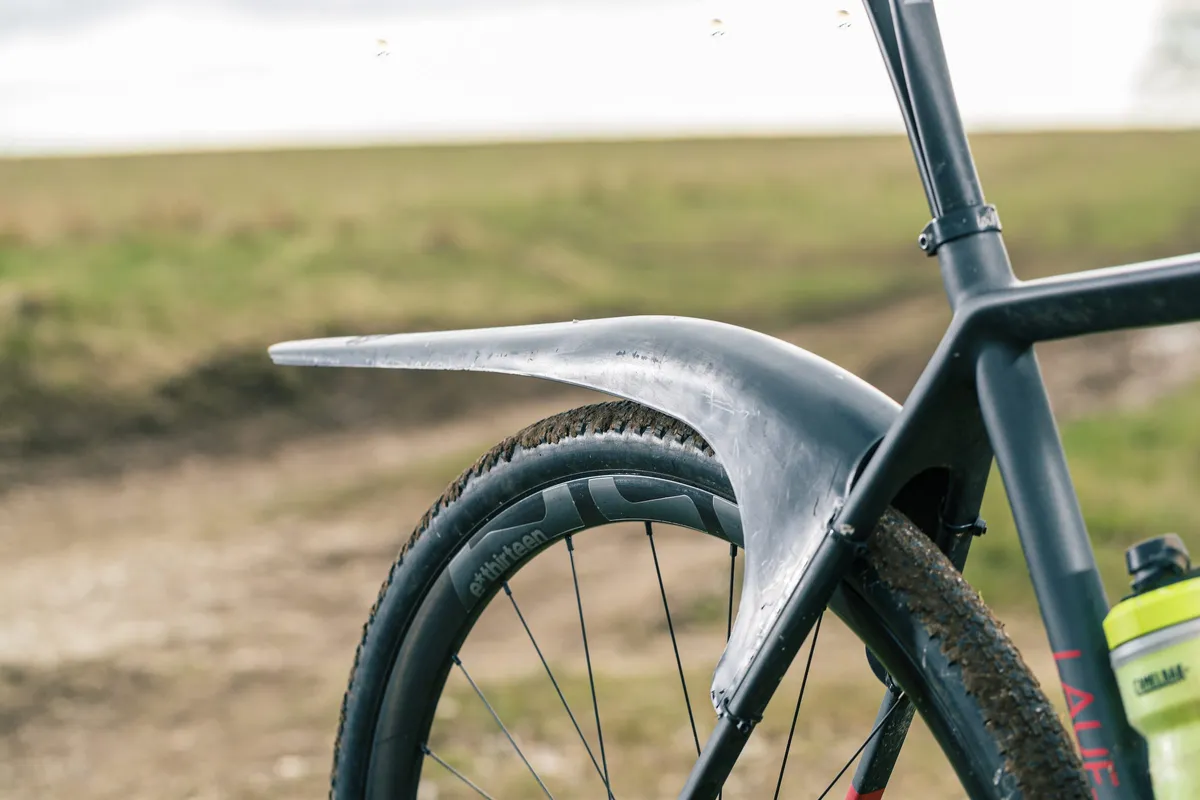
Let's start off with the most minimal mudguards on the market.
Short-coverage, clip-on mudguards are pretty much as you'd expect; they offer relatively limited coverage, compared to full-length guards, but can be fitted to any bike, because you can strap, clip or cable-tie them onto your frame without the need for mudguard eyelets.
You might not get the same full-body protection as a longer set of mudguards, but if you value rear-end protection above all else, and you want tool-free fitment, you'll be covered here.
Generally, the minimalist design means frame and mud clearance is less of an issue, too.

The Mudhugger Gravel Hugger is one such example of a short-coverage clip-on mudguard.
The Gravel Hugger is a gravel-specific set of the brand's popular mountain bike mudguards, mounting onto the fork and seatstays using cable ties or rubber O-rings.
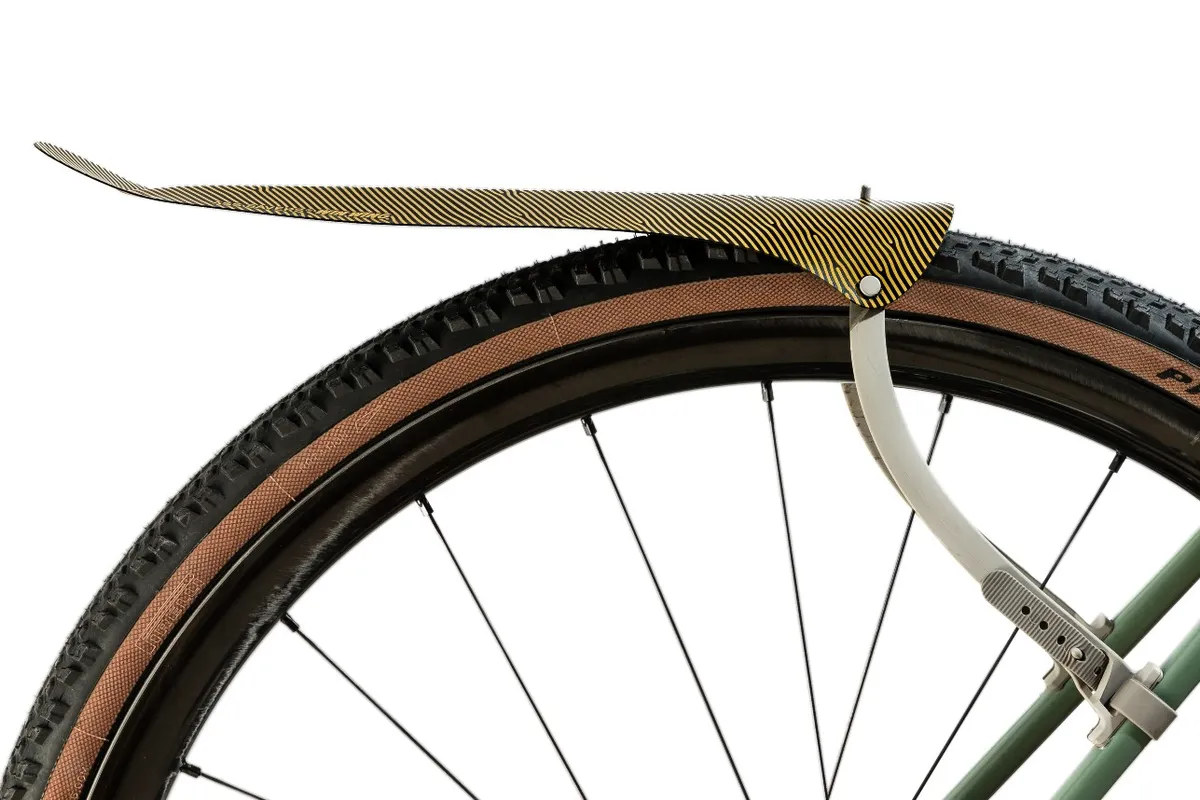
As for a rear-only option, we highly rate the Ass Savers Win Wing.
This super-minimalist – and lightweight – mudguard offers rear-tyre protection via a wishbone stay and silicone straps.
Full-coverage clip-on mudguards
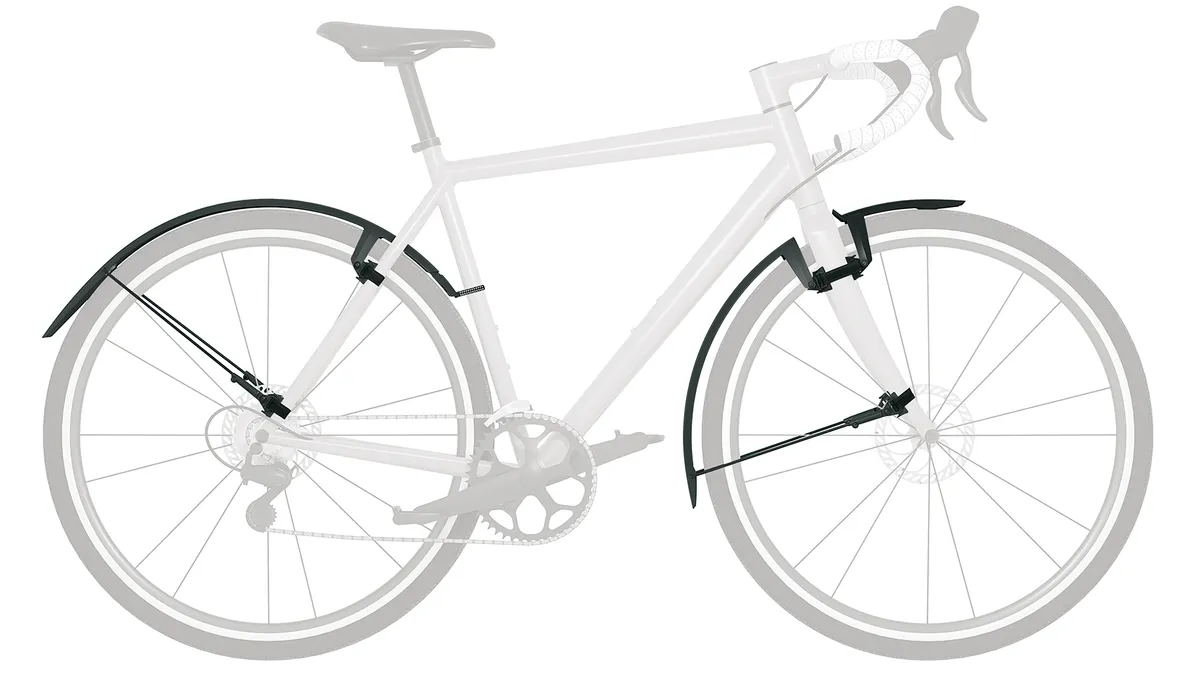
If you're looking for more extensive coverage, but your bike is not kitted out with mudguard eyelets, consider a set of clip-on mudguards.
These typically attach directly to the frame using silicone straps, but look more like a traditional set of mudguards.
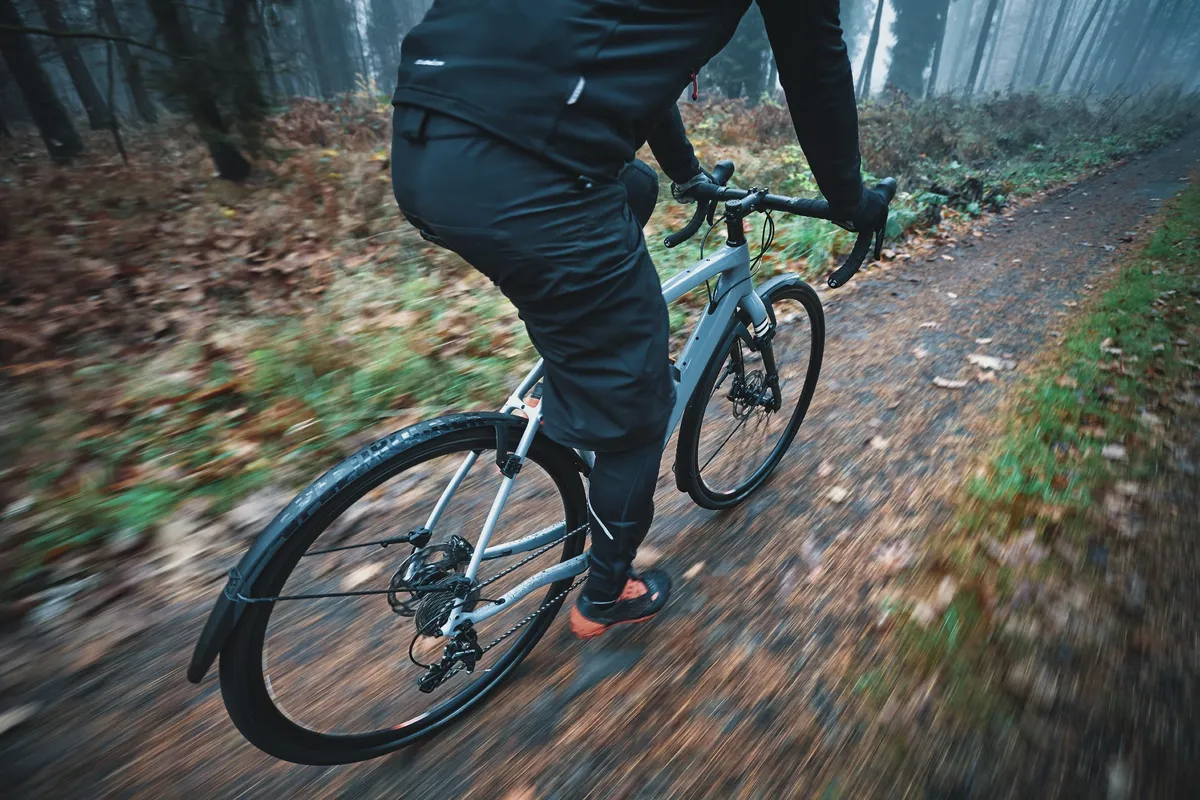
An example is the SKS Speedrocker, designed for gravel riding and cyclocross with a wider mudguard to accommodate both 700c and 650b wheels with tyres up to 42mm wide. These attach to the fork and seatstays in two places using rubberised hook and loop fastenings.
Although less secure than mudguards fitted using frame eyelets, some riders prefer clip-on mudguards because they are easier to take on and off.
Full-coverage fixed mudguards
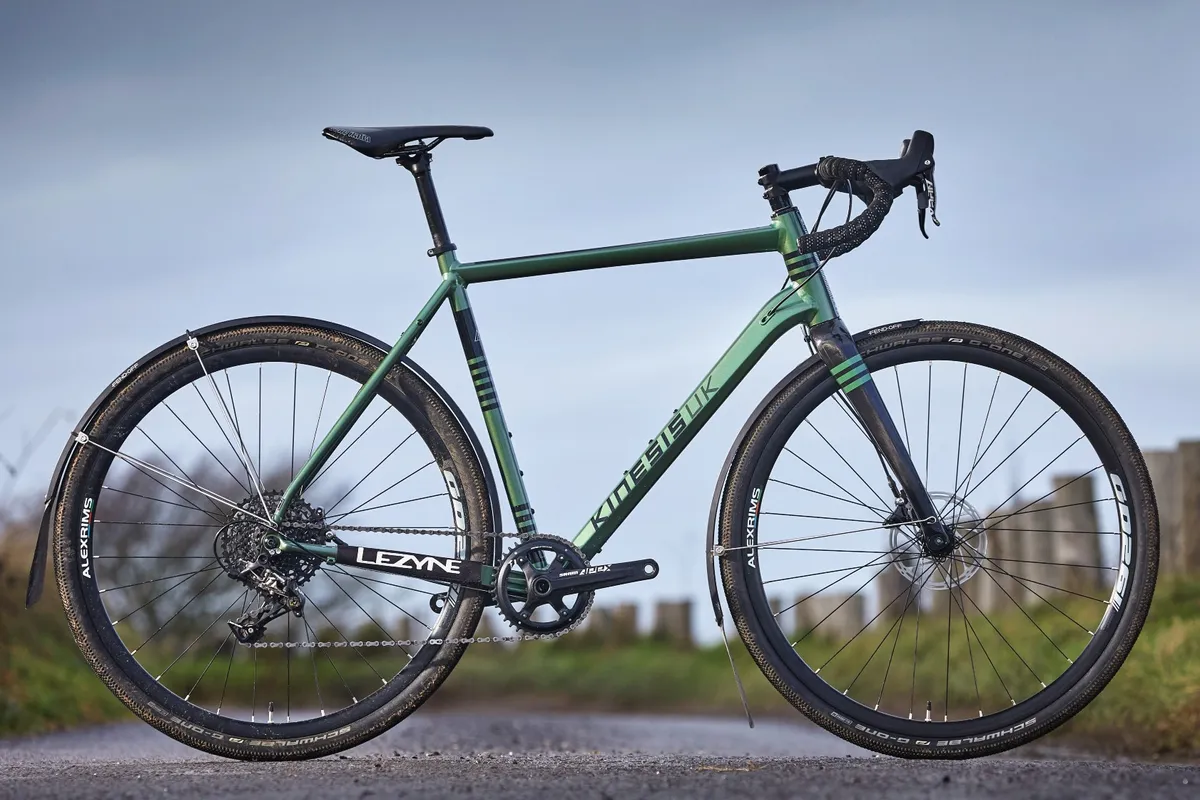
To maximise protection from dirt and puddles, opt for full-coverage mudguards. You'll need to make sure you have suitable mudguard eyelets on your frame and fork for these.
Often, these can be a little trickier to fit (they aren't an option you'll want to fit and remove on a regular basis), but once secured, give the best protection and are the sturdiest option.
One example is the Kinesis Fend-Off Wide, a gravel-friendly (and, as a result, wider) version of the brand's standard Fend-Off mudguards.
The anodised aluminium guards are secured using metal stays that run to the frame's eyelets near the axles, as well as to the top of the fork, and seatstay bridge and rear of the seat tube.
The guards also use polypropylene flaps, which attach to the rear of the front and rear guards, reducing the mud spray that ends up on you (mainly your feet), your bike, and your ride pals.
What to look for in gravel bike mudguards
Not all mudguards will work for all bikes, but it doesn't have to be a nightmare to figure out what will work best for you.
Does your gravel bike have mudguard eyelets?
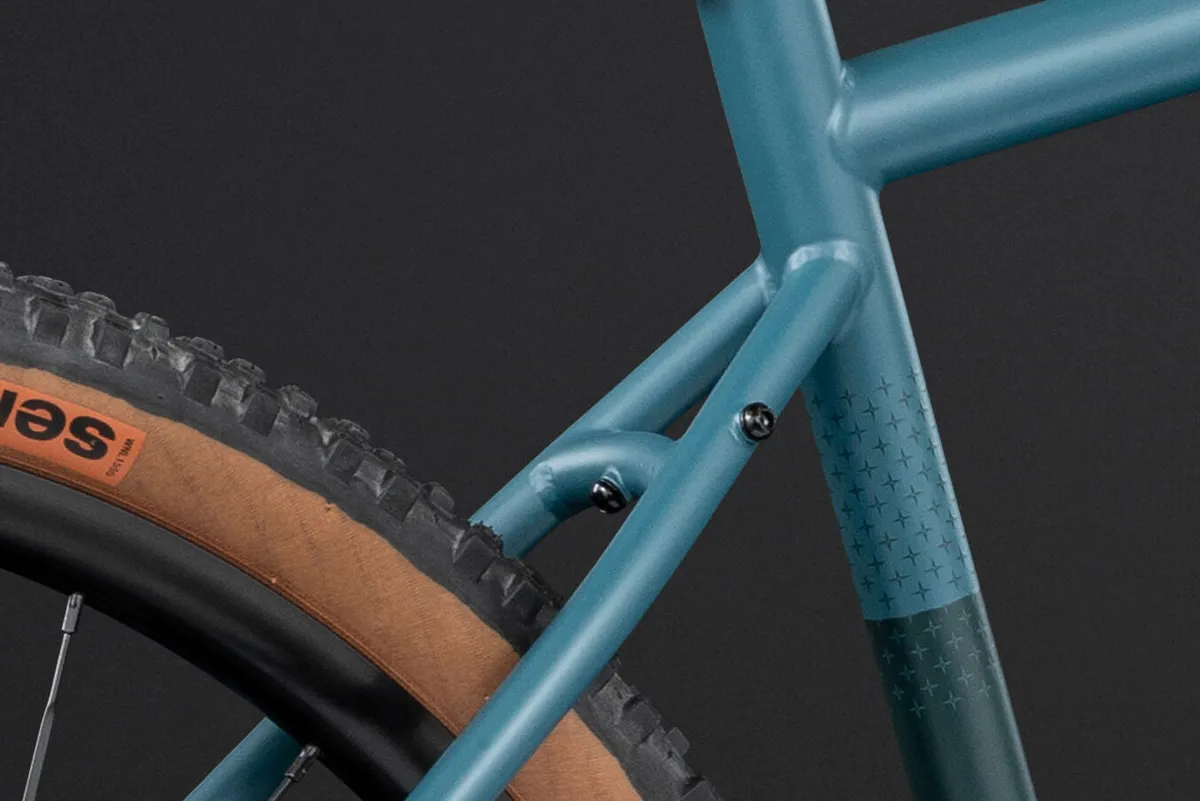
Check whether your bike has eyelets for mounting fixed mudguards around the axles, fork crown, seatstay bridge and base of the seat tube. If your bike has these, then you have full choice across the different types of mudguards.
If your gravel bike doesn't have mudguard eyelets, then you'll need to opt for clip-on mudguards.
How much protection do you need?
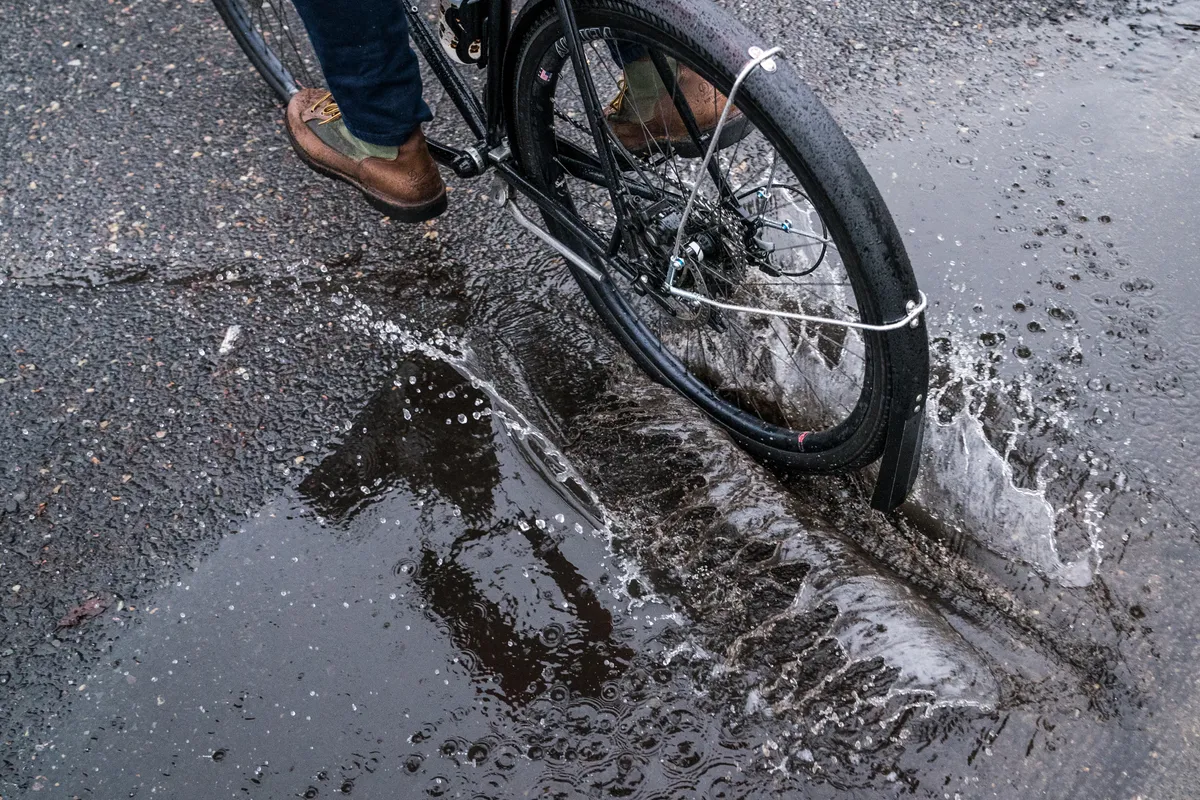
Whether you opt for short-coverage mudguards for low weight and ease-of-use, or long-coverage mudguards for maximum protection, is largely down to personal preference, where you're riding and who you're riding with.
Short-coverage clip-on mudguards will be adequate for keeping the worst of the muck off of you. However, if you plan on riding regularly with friends or in groups, then longer-coverage guards – especially those with flaps – will be better (read: more courteous) for keeping anyone riding behind you dry. Many club riders will tell you that longer-coverage mudguards are the sociable choice.
The worse the conditions you ride in, the more you're likely to benefit from long-coverage mudguards.
Having said that, even clip-on long-coverage mudguards aren't as easy to fit as many short-coverage options. Also, because they tend to fit closer to the tyre than short-coverage guards, you may need to be more cautious of trail debris.
This leads us neatly to our next important consideration…
Frame, tyre and mud clearance

Just like when you're buying a gravel bike, considering clearance is key.
You'll need to make sure you have adequate frame clearance to fit your mudguards, as well as ensuring you have enough space between the tyre and mudguard.
Check the maximum tyre clearances recommended by the mudguard brand as well as any clearance and tyre-width recommendations that accompany your bike.
This is especially critical when it comes to riding off-road because your tyres often pick up mud, stones and other trail debris that needs to pass under the mudguards.
If it's muddy and there's insufficient clearance, you're likely to get a build-up of mud at best – or risk damaging your frame at worst.
Similarly, trail debris such as twigs can cause havoc if trapped with insufficient space between the tyre and mudguard.
Bag clearance
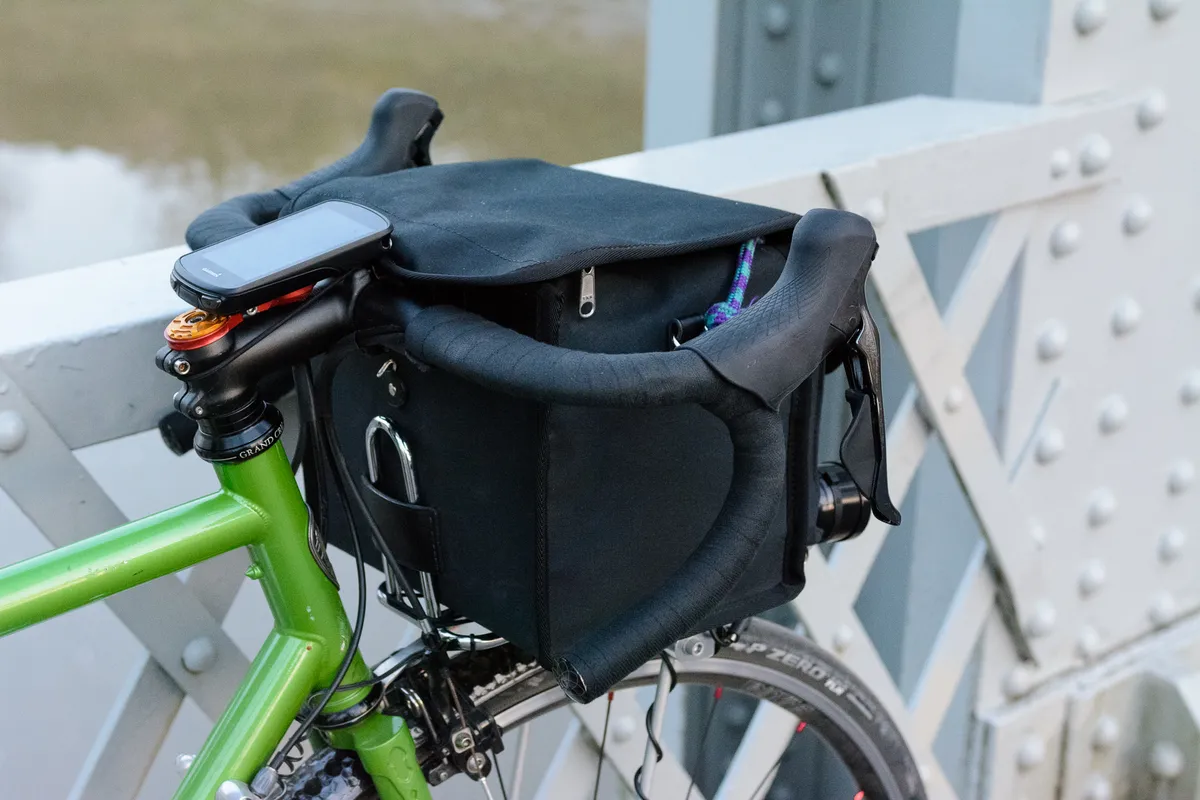
While we're on the topic of clearance, you also need to think about bag clearance if you're loading up your bike for a bikepacking trip or going touring.
The good news is that seatpost-mounted bikepacking bags essentially act as short-coverage rear mudguards, so might save you fixing one up if you're planning a longer trip (although, for this reason, make sure your bag is made from a muck-proof material).
If you are running mudguards, check you have a good gap between any bags and your guards to prevent any damage.
Even the weight of a bag on a mudguard can cause it to become mis-shaped, which can get pretty noisy.
Frame protection
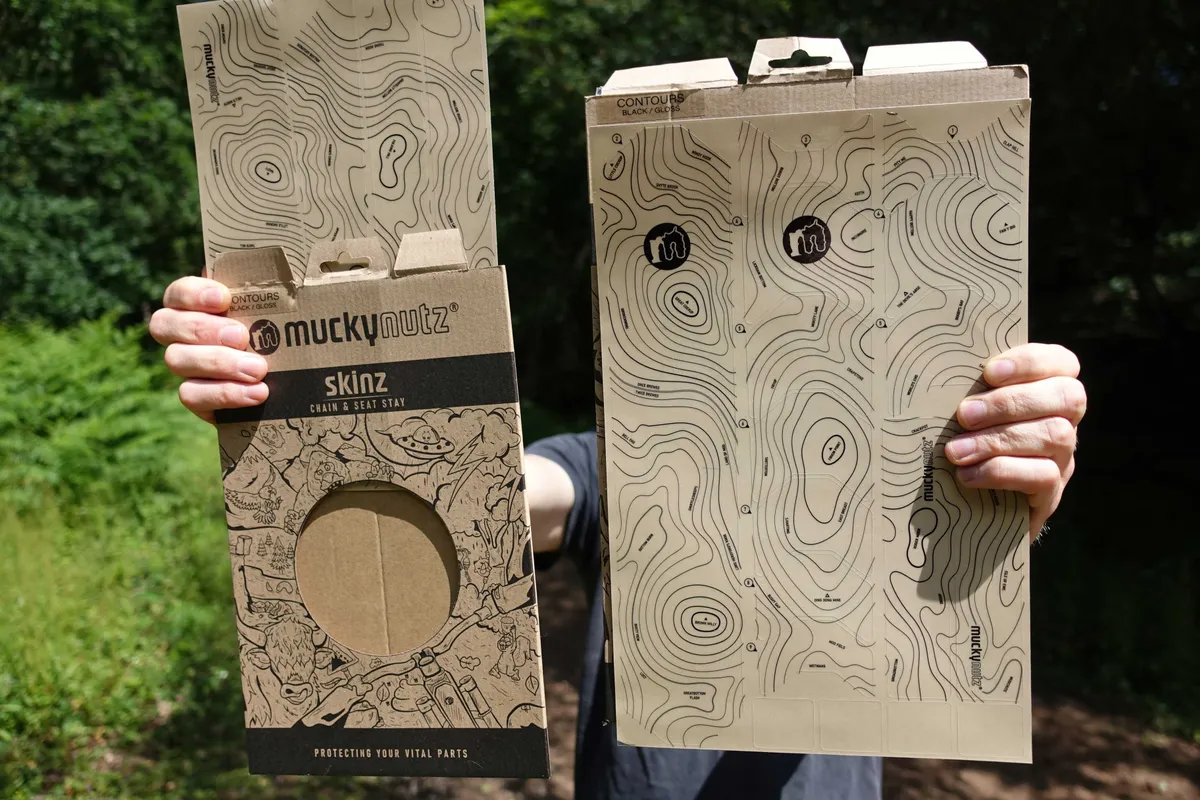
If you're using any type of clip-on mudguard, it's wise to think about using frame protection where it attaches to your bike.
It might seem like overkill, but it only takes a tiny bit of grit to work its way under the zip tie, rubber strap or Velcro attachment to wreak havoc with your paintjob.
Before fitting your mudguards, adding frame protection patches such as those offered by Pro or Restrap, or alternatively opting for areas of Helitape, will help keep your bike in good condition.
Are there mudguards designed for your bike?

A few of the more mainstream brands offer mudguards designed specifically to fit certain models.
For example, Canyon sells mudguards to complement its Grail gravel bikes, while Scott also offers mudguards made specifically for its bike models.
It's worth checking to see if there are any mudguards available for your specific gravel bike before browsing alternatives.
The important matter of flaps
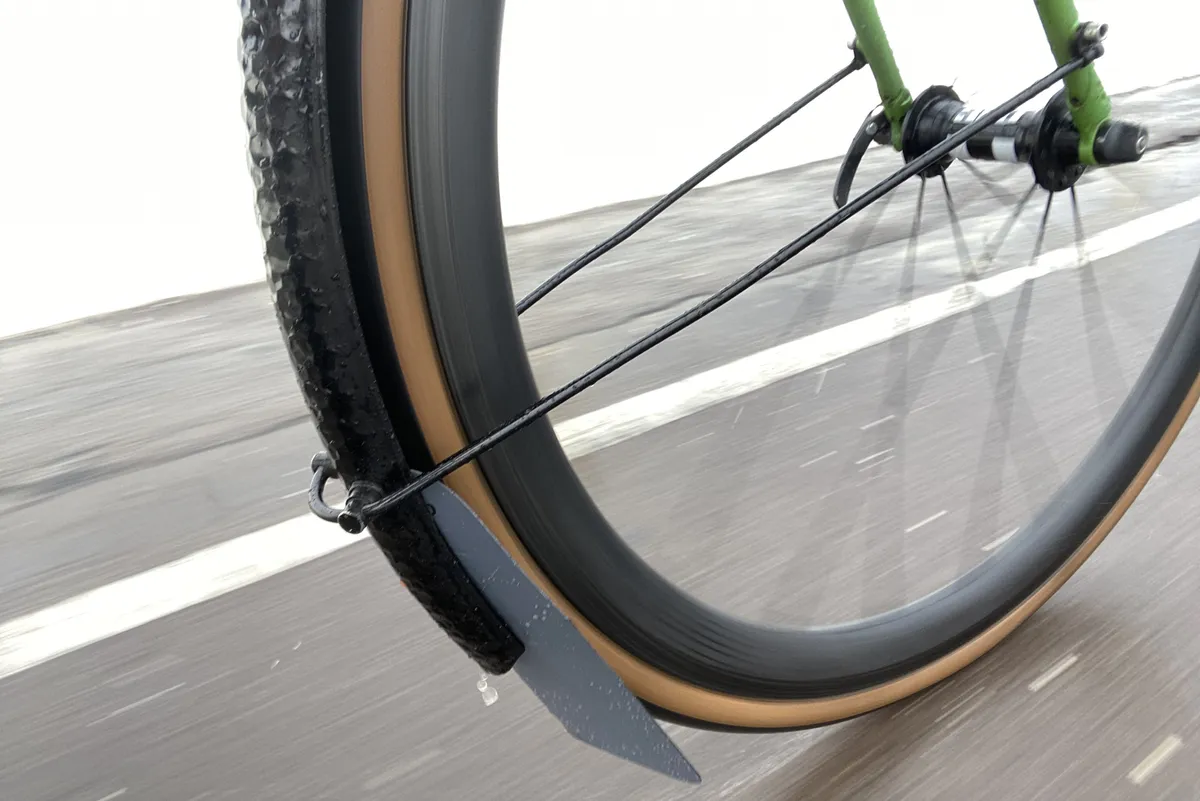
Last but not least, have you considered adding flaps to your long-coverage mudguards?
Some are supplied with them, others may require flaps to be bought separately – or you can make your own mud flap.
Essentially, the longer the flap is, and the closer it sits to the ground, the more coverage you, and the person riding behind you, will benefit from.
Plastic, rubber or even leather; there are flaps to suit all budgets and styles.
